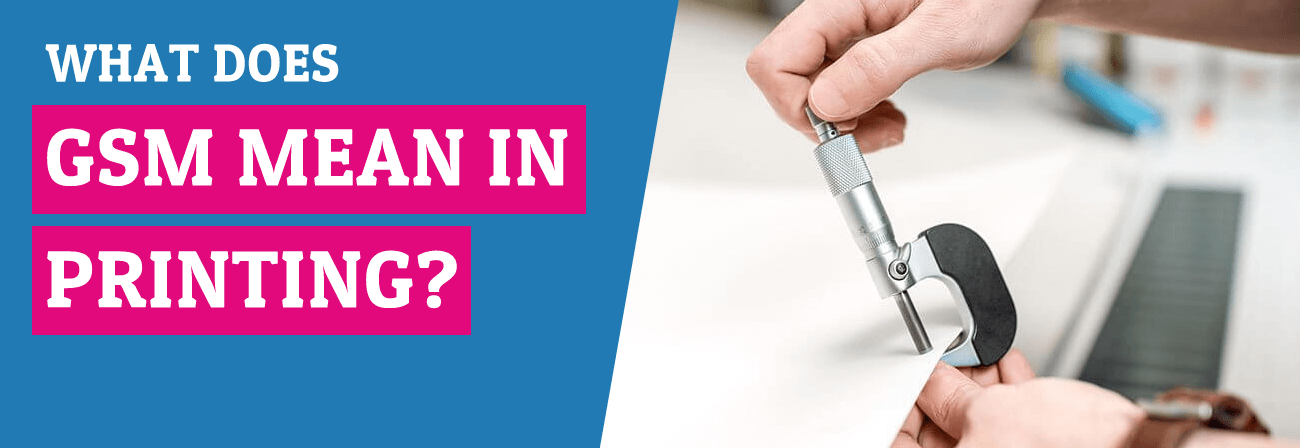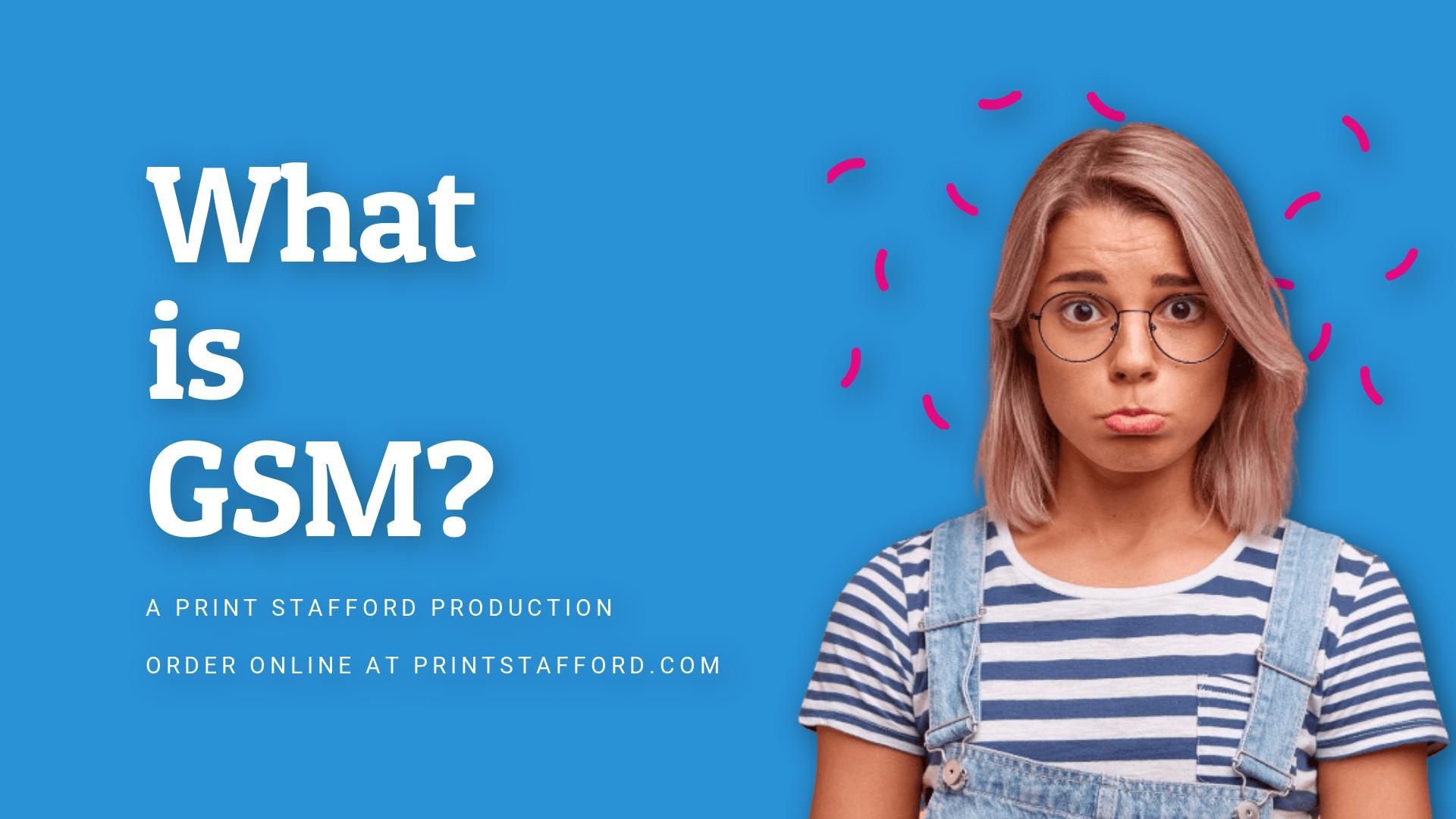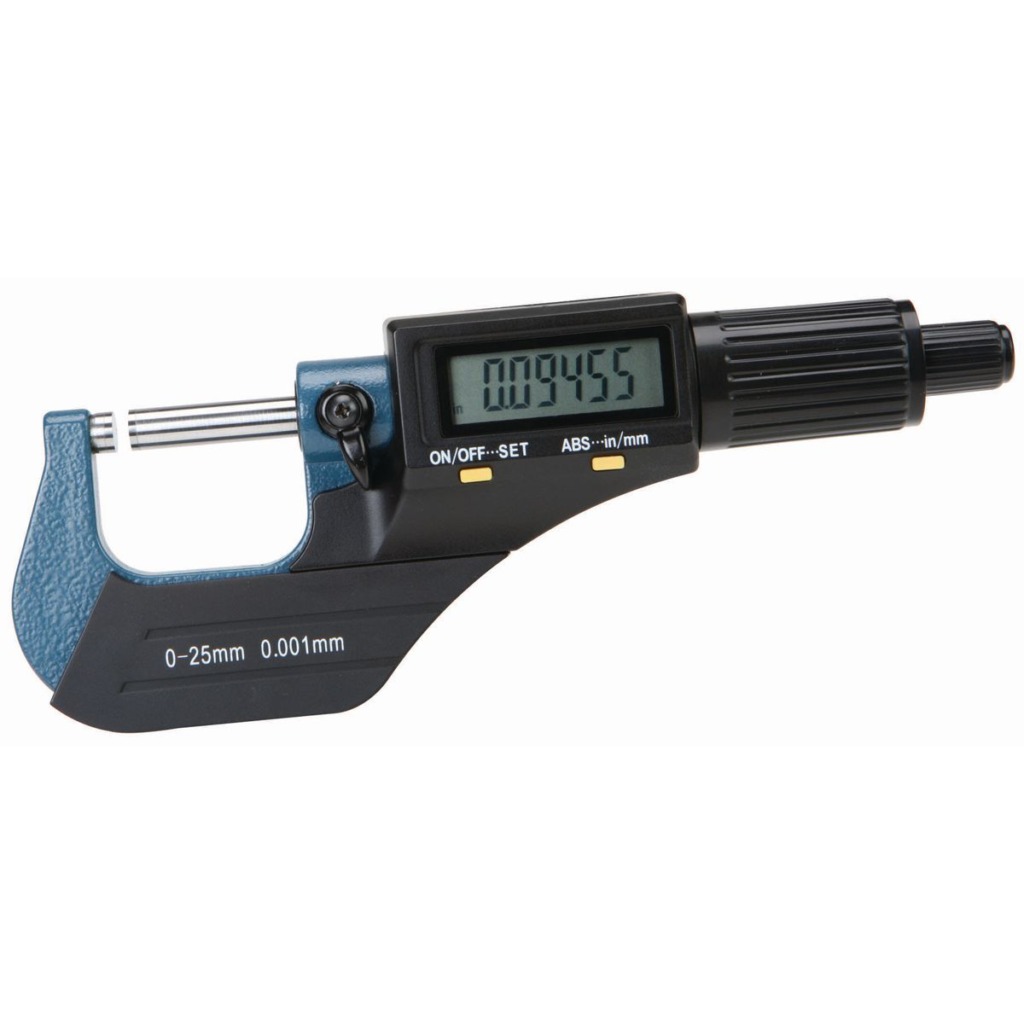Free nationwide shipping on all orders!
Simply, Affordable, Quality Print & Design in Staffordshire and the UK
Free nationwide shipping on all orders!
Simply, Affordable, Quality Print & Design in Staffordshire and the UK

The right weight of paper you use for your business card, leaflet or stationery will ultimately reflect your business, so when designing and ordering your printed product, it’s important to consider paper weight and paper quality. But what is paperweight? And how is this weight determined? It is often explained in terms of GSM… Stick with us and we will explain with our simple and easy GSM paper guide.
You’ll have come across the acronym GSM if you’ve ever ordered a batch of printed business cards or leaflets or even just stepped into a store to buy a pack of white A4 paper for your home printer. But what’s the betting that this three-letter word passed you by? Or you simply thought, what does GSM mean and why does it matter? Simply put, the term GSM stands for Grams per Square Metre and it refers to the weight of a single sheet of paper at 1m x 1m.
GSM is simply a unit of measurement for paper products. Ultimately, the higher the GSM the heavier the paper and the lighter the paper, the lower the GSM. The GSM paper weight chart measures all types of paper from light tissue paper, which is often the paper type with the lowest GSM to heavy papers such as thick card weights.
There is a huge range of GSM paper weights available, so it’s important to find the right one for you and your project. But don’t worry, we’ll help you figure that out shortly.

We know that GSM refers to the weight of the paper, but something it does not necessarily relate to is paper thickness. Don’t worry, this is something many individuals new to the printing industry get confused with, especially because heavier paper is often thicker and stiffer than lighter paper. However, that rule doesn’t apply to all stock.
You may also come across two different types of paper with the same GSM one thicker than the other.
For example, paper finishes can make a huge difference to paper thickness despite both paper types having the same GSM. If you’re not clued up on paper finishes, you can read our guide on that in our Guide on types of paper.
A good example is the difference in thickness between silk and uncoated paper. If you had two sheets of 400gsm silk and uncoated paper in front of you, you’d find the silk would be more compact and the uncoated a little thicker despite them weighing the same. This is because, in the uncoated stock, there are extra pockets of air that haven’t been coated.
As we now know, the most common way to measure paper weight in the UK is by measuring grams per square metre, or GSM. This involves weighing a 1 by 1-metre square of paper type and recording its grams per meter squared. In the United States of America, however, they measure paperweight in pounds and base it on the weight of 500 sheets of paper. At Print Stafford, we display all our paperweights in GSM.
Yes, there is a tool! A tool to measure the thickness and weight of paper is called a caliper, or a micrometer.
This method measures actual paper thickness in 1/1000-inch increments. This measurement can also be called points. For example, paper measuring 0.007 inches in thickness is also referred to as p-point paper.

You’re officially a pro on paper weight, and what is meant by all the different GSMs, but why does all this matter? What is the importance of choosing the right GSM? Simply put, you can’t and shouldn’t be using the same paper weight for everything in your business. You wouldn’t use the same stock for a Business Card as you would for the Letterheads going into your own printer, right?
When printing materials for promoting your business, you want them to look and feel professional. In this case, you may want to choose a paper stock with a higher GSM. This way, you know it is going to last longer and feel great in the customer’s hands. In contrast, if you are printing something with a short life span, like a Printed Label or decorative tissue paper for packaging up a product, then you may want to consider something with a lower GSM
35 gsm to 55 gsm – These are considered some of the lightest weights and these thin papers are usually reserved for newspapers and tissue paper.
70 gsm to 80 gsm – Probably the most standard paper type regularly found and used as typical household printer paper.
90 gsm to 100 gsm – A paper stock commonly used as office paper. We offer our printed Business Stationery such as Letterheads, Envelopes and Compliments Slips on this paperweight
120 gsm to 140 gsm – Considered a heavy paperweight, we also offer many of our Business Stationery on this paperweight such as our 120gsm paper Letterheads.
150 gsm to 200 gsm – Even heavier and studier stock, once again great for durable and resilient Leaflets, Folded Leaflets and Brochures
210 gsm to 250 gsm – This level of GSM for paper is one of the most popular for higher quality leaflets and flyers, offering a good level of resistance and thickness
260 gsm to 300 gsm – You wouldn’t use this paperweight for Business Stationery. While still having a bit of a bend, it is high-quality card stock used by many businesses looking to make a professional statement. We offer this GSM on many of our folded and Flat Leaflets and Flyers and is commonly used as magazine covers.
300 gsm to 350 gsm – Paper stock with a weight higher than 300gsm is considered a heavy card and is often reserved for print products that get a lot of handling like Loyalty Cards.
400 gsm to 450 gsm paper is best suited to heavier weight designs. As such we use 450gsm as standard for our printed Business Cards.
Different paper stocks can affect how the thickness of the paper feels and choosing the right paper for each print job is not something to be taken lightly. We get asked all the time. As well as different GSM there are different paper coatings and finshes which can affect the feel and quality of paper as well. Your paper needs will vary greatly on the intended use!
This is an impossible question to answer since the best paper weight for printing depends entirely on you, your project and your budget. In terms of durability and sturdiness, the best GSM for paper is above 300gsm since it is going to last for a long time and withstand lots of handling. However, if you are looking to design and print a selection of Letterheads or Flat leaflets, this kind of stock could be way too thick.
Hopefully, you have a better understanding of what GSM in paper means and how to make the right choice regarding the paper thickness on your print.
If you’re unsure which paper weight you should choose, get in touch with the team at Print Stafford. Give us the rundown of your project and all your requirements, and we can help you decide. We specialise in all levels of GSM paper so let us help you find the most advantageous and cost-effective option for you!
